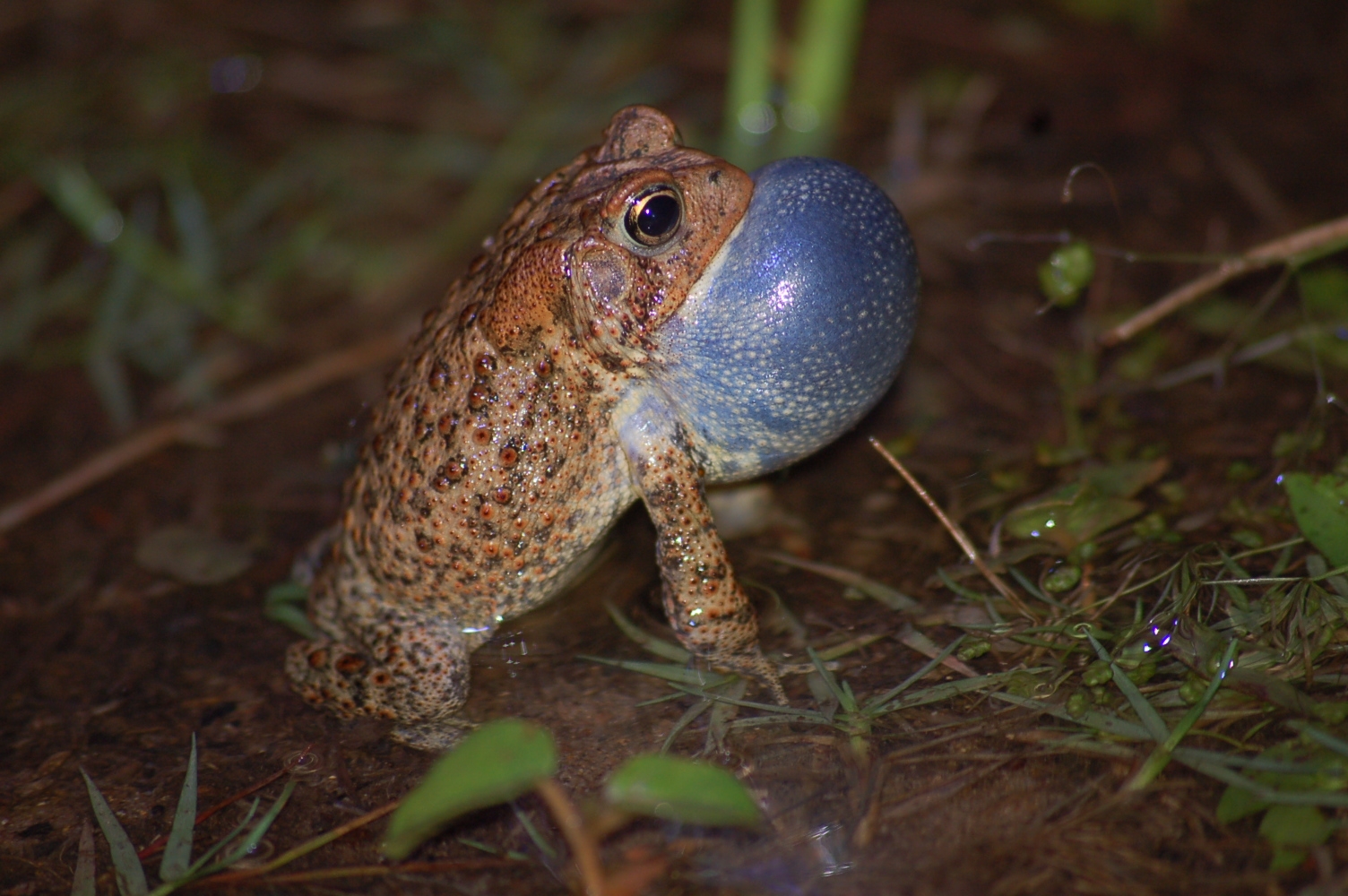
A male Houston toad captured in mid mating call in Austin County, Texas. (Photo by: Rachel Rommel, Houston Zoo)
The late University of Florida professor of zoology and pioneering conservationist Archie Carr is best known for his extraordinary contributions to sea turtle conservation. But Archie was also a herpetologist. It was Archie who said: “Frogs do for the night what birds do for the day: They give it a voice. And the voice is varied and stirring and one that ought to be better known.”
Amphibians are disappearing worldwide for a wide variety of reasons – pollution, disease, habitat loss and over-consumption. In my home state of Texas, amphibians are being threatened by one of the worst droughts in memory. These animals are small and to the casual observer seemingly inconsequential. But they aren’t. They keep insects in check and are vital to the survival of colorful herons, raccoons and other species. And they are also fun to observe because of their colors, fascinating behaviors and the amazing nighttime calls that made such an impression on Archie Carr.
So, what can you do to help preserve these amazing animals? It’s simple. Become a frog watcher.
Each year the Houston Zoo holds its annual Texas Amphibian Watch Workshop. Volunteers are trained to collect information about frogs and toads at local wetlands and even in their own back yards. The data is used by the Texas Parks and Wildlife Department in partnership with the North American Amphibian Monitoring Program.
This year, individuals and families will gather at the Houston Zoo on May 27 at 6:30 p.m. for a Texas Amphibian Watch Volunteer training session. At the training session, participants will learn the calls of local amphibians, participate in interactive frog activities and then take a hike into the wilds of Hermann Park, the 445-acre green oasis in the heart of the nation’s fourth largest city that surrounds the Houston Zoo.
Family frogging is an enjoyable way to get kids and young adults off the living room couch, away from the TV and excited about science and taking care of the environment. If there are no training opportunities where you live, visit the North American Amphibian Monitoring Program on the Web at http://www.pwrc.usgs.gov/naamp/ for information about how you can become a volunteer and for coordinator contact information.
Volunteer and give the night a voice.
—Brian Hill, Houston Zoo
